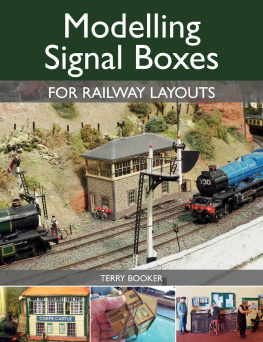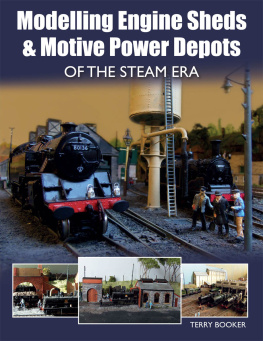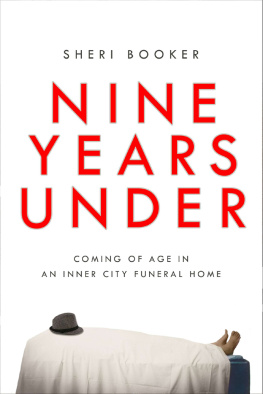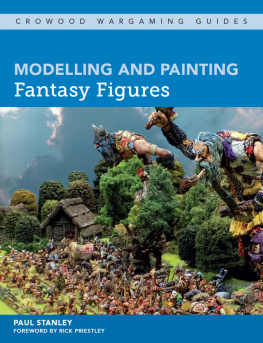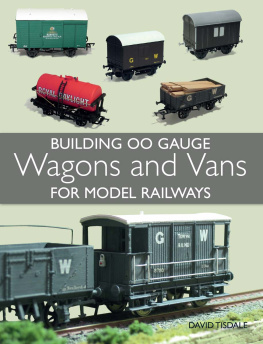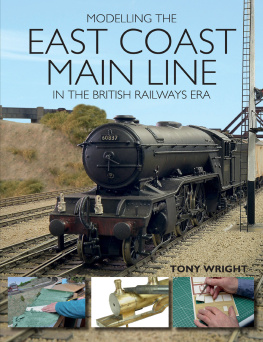Modelling
Signal Boxes
FOR RAILWAY LAYOUTS

Modelling
Signal Boxes
FOR RAILWAY LAYOUTS
TERRY BOOKER

THE CROWOOD PRESS
First published in 2017 by
The Crowood Press Ltd
Ramsbury, Marlborough
Wiltshire SN8 2HR
www.crowood.com
This e-book first published in 2017
Terry Booker 2017
All rights reserved. No part of this publication may be reproduced or transmitted in any form or by any means, electronic or mechanical, including photocopy, recording, or any information storage and retrieval system, without permission in writing from the publishers.
British Library Cataloguing-in-Publication Data
A catalogue record for this book is available from the British Library.
ISBN 978 1 78500 297 7
Disclaimer
The author and the publisher do not accept any responsibility in any manner whatsoever for any error or omission, or any loss, damage, injury, adverse outcome, or liability of any kind incurred as a result of the use of any of the information contained in this book, or reliance upon it. If in doubt about any aspect of railway modelling skills and techniques, readers are advised to seek professional advice.
CONTENTS
PREFACE
What lies ahead in this, my third book for The Crowood Press? Like the previous titles, it is an attempt to help readers, irrespective of their level of experience, to get a better understanding of the steam era and also to make the most of their modelling skills. The subject of signal boxes and signalling is a vast one, with thousands of boxes controlling millions of points and signals and now, with the rapid development of computers and their associated technologies, a seemingly endless supply of new kits and modellers aids. My main objective, therefore, is to cover as much as I can and hope that not too much more happens between the text leaving my keyboard and the finished publication reaching your bookshelf.
ACKNOWLEDGEMENTS
After more than half a century of modelling and linesiding, I owe a mention to so many individuals and organizations that it would need another complete chapter to thank them all properly for their contributions. Top of the list, however, must be my immediate family. For my early endeavours, my thanks go to my late parents for their encouragement and boundless generosity. Even in the bleak Austerity Years, when it was never easy to find two pennies to rub together, there was always something to help me on my way. For the last fifty years, my long-suffering better half has put up with an ever-expanding tide of model-making paraphernalia, which frequently overflows from the confines of the loft to the comfort of the lounge. Joan now not only tolerates the modelling and the annual pursuits of steam abroad, but also has the added burden of an author who is often locked away in the study. Thanks, too, for my sons, who treat me as a geriatric Peter Pan, the boy who never grew up, and give me trains not ties at Christmas.
My thanks also go to the many companies and individuals who have helped with the book by generously supplying samples or offering sound advice.
INTRODUCTION
Most modellers, whatever their age and their chosen gauge, will always remember their first train set and their first signal box. For me, that entails a step back in time of around seven decades, to the darkness of a winters evening, in the dusty and dimly lit surroundings of my fathers newly rented forge and workshop. It was no secret that the approach of my seventh birthday and of Christmas would soon be rewarded with some second-hand Hornby clockwork trains. Dad was making a signal box and, if I was really good, I had been promised a station too. As with everything my father did, it would be sturdy enough to withstand another war, never mind the accidental demolition efforts of a seven-year- old. I perched on his tool-strewn work-bench and watched him mark out and cut a sheet of hardboard. The still unfamiliar smell of the workshop was made up of wafts of Old Holborn tobacco from Dads everpresent roll-up, and the pungent aroma from a large tin of ancient wood-glue that was slowly melting on the glowing embers of the forge. With the careful assembly of the half-dozen bits of hardboard, Hey Presto!, my signal box was born.
Of course I wanted to take it back up the village there and then, but the glue had to dry and it was already well past my bedtime. Sure enough, on Christmas morning there it was, together with the station, smart in its coat of brick-red paint with silver windows and ready to control its single signal to permit the 0-4-0 LNER tank and two coaches to hurtle past at speeds even Mallard could not match. True to form, those two simple structures would last throughout the innocent years of my gauge 0 adventures, until they were sold in order to fund the beginnings of grown-up adventures with Hornby Dublo 3-rail.
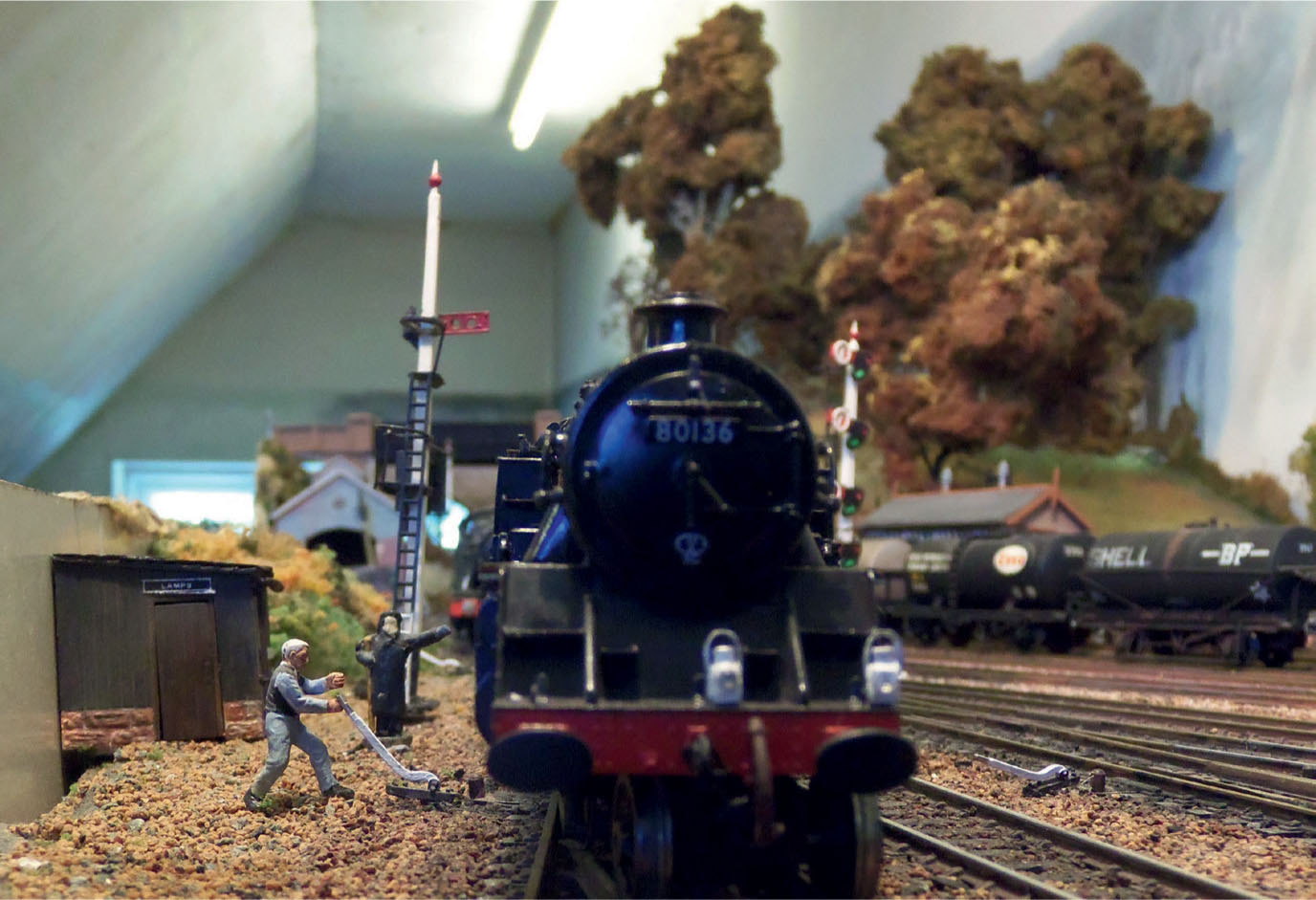
Hand-operated point lever at Knighton Yard on Wessex Lines.

Scratch-built Sykes banner repeater for the starting signals further along the platform at Sherborne Abbas.
It was not that many months later that I began my life-long enthusiasm for the steam railway. Challow station, halfway between Didcot and Swindon on Brunels billiard table, was less than two downhill miles from home and in those distant days I was free to roam more or less as I pleased. My first real bike (also made by Dad!) could get me there in under half an hour, although it took somewhat longer coming back up to the village. At first I knew nothing about what to do in this strange world of trainspotting, but a few older boys instructed me in the practice of writing down the numbers in my newly acquired notebook. They went on to explain that the gleeful shouts of cop did not imply some special type of train, but merely meant an engine that they had not seen before. The innocence of youth!
As the years rolled by the older ones drifted away, but I continued my journeys and soon invested my pocket money in the brown-covered Western Region Ian Allen ABC, and a new-fangled biro to underline those cops. New-found school friends became occasional companions, but my visits tended to be solitary expeditions -- I travelled alone as far as Oxford, Swindon, Reading and Basingstoke, even before I had become one of those new so-called teenagers. However, as far as Challow was concerned, I found myself at an advantage; especially in the winter. Despite being well into his forties, Dad was still a regular on the village football and cricket teams, as was a certain Ken Rowland, whose day job just happened to be as one of the signalmen at Challow station. Whether out of friendship for my dad or pity for a forlorn and freezing schoolboy, the signal-box window would often slide back and I would be waved to come round. Having strategically placed myself in full view on the up side, I would dash back over the road bridge, dump the bike (dad-built Mk2!), scramble over the fence to the meadow, run the hundred yards along to the back of the box, cross the fence again, remove the muddy wellies and climb the stairs to the highly polished warmth of the Challow signal box.
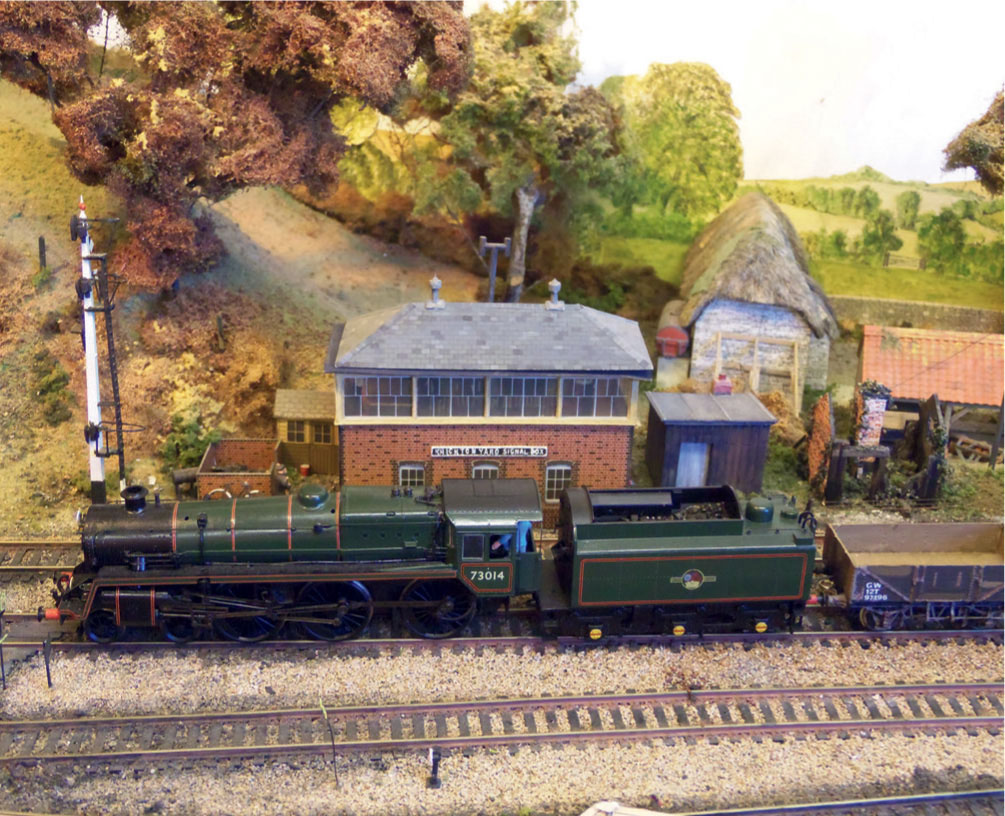
Next page
